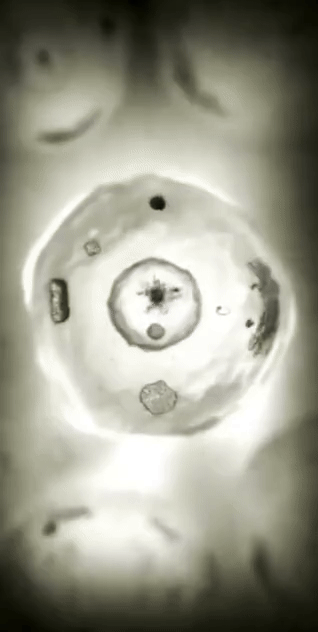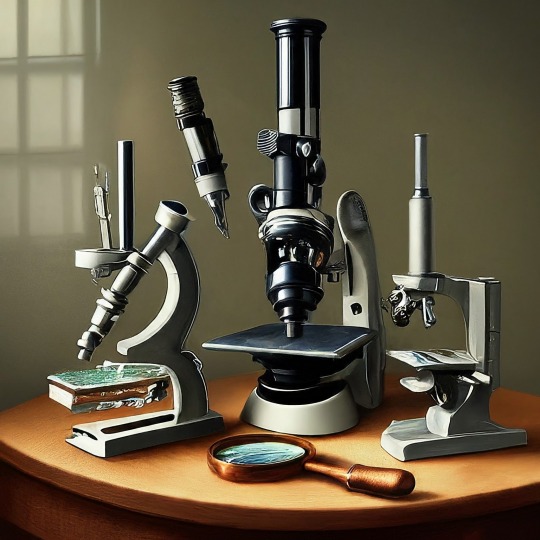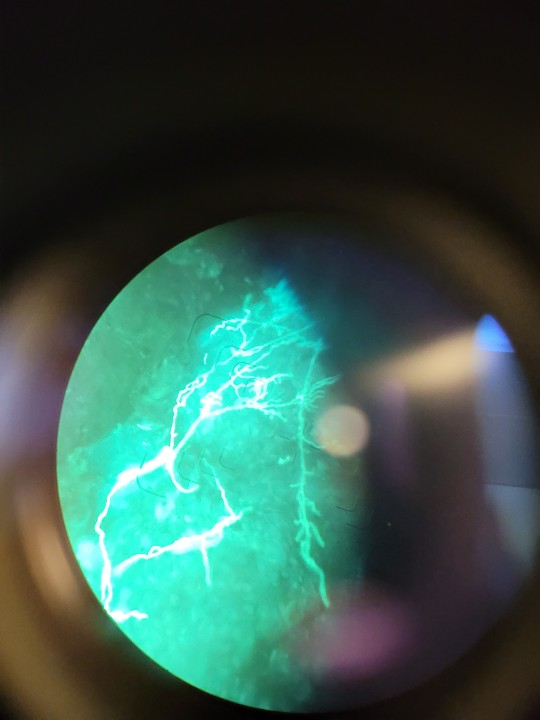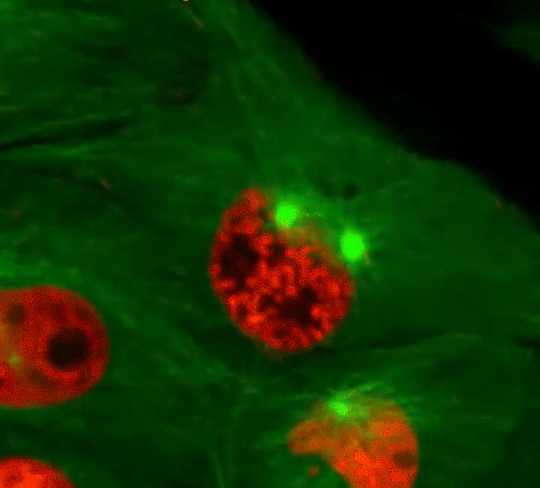#Fluorescent Microscope
Explore tagged Tumblr posts
Text
Microscope Manufacturers & Suppliers in India

Many microscope manufacturers and suppliers worldwide offer different kinds of quality optical, digital, and electron microscopes for educational, medical, and industrial purposes. Due to the state of the art technology and advanced precision manufacturing capabilities the manufacturers put great emphasis on quality imaging and durability. They are trusted all over the world and are committed to customer service, product quality, price, and customized solutions for all laboratory and research purposes. Experienced top quality microscope solutions with Infinity Optics - leading manufacturers and suppliers of microscopes in India. The motors driving Infinity Optics is precision, reliability, and innovation, so please go ahead and experience the advanced optical instruments offered by Infinity Optics.
#Inverted microscope#Fluorescent Microscope#Microscope Manufacturers in India#Microscope Suppliers#Laboratory Microscope Suppliers#Microscope Manufacturer in Ambala#Laboratory Equipment Manufacturers in India#Lab Equipment Suppliers in India#Stereo Zoom Microscope Supplier#Multi View Microscope#Upright Fluorescent Microscope#Research Microscope#Microscope Manufacturers & Suppliers in India
2 notes
·
View notes
Text









i've been mixing flesh, wax, chemicals and dyes for months to obtain these images
#first one look like a skull??#flesh wizard#i modified them for esthetical purpose only here ahah#but maybe its gonna be my first paper omgg#ik its an artblog but can we agree that this count??#fluorescence#science#cells#biology#immunofluorescence#microscopy#medecine#medblr#pathology#skull#retrowave#synthpop#synthwave#neon light#microscope
274 notes
·
View notes
Text

Every second, millions of cells in our bodies undergo mitosis, a fundamental process that ensures growth, repair, and development. From a single parent cell, identical daughter cells emerge, each carrying the same genetic information. This intricate dance of chromosomes and cellular structures keeps life going!
#cells#biology#photography#explore#nature#science#adorable#education#lol#amazing#awesome#funny#microscope#fluorescence#tissue#growth#cell division#nucleus#nuclei#centrioles#prophase#metaphase#anaphase#telophase#cytokinesis#mitosis#chromosomes#dna#microtubules#spindle
35 notes
·
View notes
Text

Fluorescence microscope image
12 notes
·
View notes
Text
im literally soooo cute
#and so is my girlfriend. but we're talking about me rn#also i am smart! and funny! and people like me#and i have several friends#and i am a good cook. and i can knit. and operate basically any fluorescence microscope incl TIRF and STED and so on#and i give excellent feedback on presentations and experimental ideas#and my girlfriend is so in love with me because of all of these things.#ok we can talk about them also a bit i guess#box opener#😊.
10 notes
·
View notes
Text
Immunohistochemistry Market Demand Worldwide in 2025, by Region to 2032

The global immunohistochemistry (IHC) market is poised for significant growth in the coming years, driven by advancements in diagnostic technologies, increasing prevalence of chronic diseases, and rising demand for personalized medicine. IHC is a laboratory technique used to detect specific antigens in cells within tissue sections, playing a crucial role in diagnostics, cancer research, and personalized therapies. The market's expansion is expected to be fueled by ongoing technological innovations, strategic partnerships, and the growing adoption of IHC in medical research and clinical applications.
Immunohistochemistry is an essential tool in the medical and biotechnology sectors, primarily used for the detection and localization of biomarkers within tissues. It employs antibodies to detect specific antigens in cells, providing crucial information for the diagnosis and prognosis of diseases, particularly cancers. The IHC market is gaining momentum due to the increasing need for early disease diagnosis, the growing emphasis on precision medicine, and the rise of novel therapeutic approaches such as targeted therapy and immunotherapy.
Request a Free Sample Copy - https://www.skyquestt.com/sample-request/immunohistochemistry-market
In 2024, the global immunohistochemistry market was valued at approximately USD 3.33 billion and is projected to expand at a compound annual growth rate (CAGR) of 7.4% during the forecast period from 2025 to 2032. By 2032, the market size is expected to reach USD 5.91 billion, driven by the factors outlined below.
Market Drivers
1. Rising Prevalence of Chronic Diseases: Chronic diseases, particularly cancer, are becoming more prevalent worldwide. According to the World Health Organization (WHO), cancer is the second-leading cause of death globally. IHC is increasingly utilized in cancer diagnostics, helping to identify cancer types, guide treatment options, and predict patient outcomes. The demand for IHC is expected to surge as early diagnosis and targeted treatments become integral components of modern healthcare.
2. Technological Advancements: The IHC market is witnessing continuous advancements in technologies such as automation, multiplexing, and the development of novel biomarkers. The introduction of automated IHC systems has significantly improved diagnostic accuracy and efficiency, reducing the time required for analysis and increasing laboratory throughput. Additionally, the emergence of digital pathology and artificial intelligence (AI) in IHC is expected to enhance the precision of diagnoses and streamline workflows.
3. Increasing Demand for Personalized Medicine: Personalized medicine focuses on tailoring medical treatments based on individual genetic, environmental, and lifestyle factors. IHC is pivotal in identifying specific biomarkers that can guide personalized treatment plans, especially for cancer patients. As the demand for personalized therapies continues to rise, the adoption of IHC techniques is expected to grow, further driving the market.
4. Growing Healthcare Infrastructure in Emerging Markets: Emerging economies, particularly in Asia-Pacific, Latin America, and the Middle East, are witnessing improvements in healthcare infrastructure, leading to greater adoption of advanced diagnostic tools like IHC. The increasing prevalence of cancer in these regions, coupled with the growing awareness of early diagnostic methods, is expected to contribute to the market's expansion.
Market Restraints
1. High Cost of IHC Equipment: One of the key challenges for the immunohistochemistry market is the high cost of IHC equipment and reagents. These costs can be prohibitive for smaller laboratories and healthcare settings, especially in developing regions. This financial barrier may limit the widespread adoption of IHC techniques, particularly in low-resource environments.
2. Lack of Skilled Professionals: The successful implementation of immunohistochemistry requires highly skilled professionals to interpret the results accurately. The shortage of qualified pathologists and laboratory technicians in several regions could hinder the growth of the market, as the technique demands expertise in both the technical and diagnostic aspects.
Make an Inquiry to Address your Specific Business Needs - https://www.skyquestt.com/speak-with-analyst/immunohistochemistry-market
Market Opportunities
1. Integration of Artificial Intelligence (AI) in IHC: The integration of AI in IHC is one of the most promising trends in the market. AI-powered tools can assist in the interpretation of IHC results, enabling faster and more accurate diagnosis. This innovation is expected to reduce human errors, improve efficiency, and drive the adoption of IHC in both clinical and research settings.
2. Increasing Research and Development Activities: Ongoing research in immunohistochemistry, especially in cancer immunotherapy and molecular diagnostics, is likely to open new avenues for market growth. As more biomarkers are identified, the application of IHC in detecting and diagnosing a broader range of diseases will expand.
3. Strategic Collaborations and Partnerships: Key players in the IHC market are forming strategic collaborations and partnerships to expand their product offerings and reach new markets. Mergers and acquisitions are also common in the industry, as companies seek to integrate complementary technologies and enhance their competitive edge.
Market Segmentation
1. By Product Type
- Reagents: Includes antibodies, detection kits, and staining agents. Reagents hold the largest share of the IHC market due to their essential role in the staining process and the need for frequent replenishment.
- Instruments: Includes manual and automated IHC systems, with automated systems gaining significant traction due to their efficiency and accuracy.
- Consumables: These include slides, cover slips, and other materials used in the IHC process.
2. By Application
- Cancer Diagnostics: The largest and fastest-growing application segment. IHC plays a critical role in the diagnosis, staging, and classification of various cancer types.
- Infectious Diseases: IHC is increasingly used in the detection of infectious pathogens, including viruses and bacteria, particularly in research settings.
- Neurological Disorders: The role of IHC in studying neurological diseases, such as Alzheimer’s and Parkinson’s, is growing, providing new opportunities for market growth.
3. By End-User
- Hospitals and Diagnostic Laboratories: These facilities are the primary users of IHC techniques, as they are essential for clinical diagnostics.
- Research Institutes: IHC is widely used in research, particularly in oncology and immunology, to identify biomarkers and explore new therapeutic targets.
Regional Analysis
1. North America: North America holds the largest market share for immunohistochemistry due to the advanced healthcare infrastructure, high demand for cancer diagnostics, and continuous innovations in IHC technologies. The U.S. is the dominant market player, contributing significantly to the region’s growth.
2. Europe: Europe is also a prominent market for IHC, with countries like Germany, France, and the UK investing heavily in advanced diagnostic technologies. The presence of leading diagnostic and pharmaceutical companies in the region further supports market growth.
3. Asia-Pacific: The Asia-Pacific region is expected to witness the highest growth rate in the IHC market, driven by increasing healthcare investments, rising cancer prevalence, and improving diagnostic capabilities in countries such as China, India, and Japan.
4. Latin America and Middle East & Africa: These regions are emerging markets for IHC, as healthcare infrastructure improves and the demand for advanced diagnostic techniques rises.
Take Action Now: Secure Your Immunohistochemistry Market Today - https://www.skyquestt.com/buy-now/immunohistochemistry-market
Key Market Players
Leading players in the immunohistochemistry market include:
- F. Hoffmann-La Roche Ltd.
- Danaher Corporation
- Agilent Technologies Inc.
- PHC Holdings Corporation
- Thermo Fisher Scientific Inc.
- Merck KGaA
- Bio-Rad Laboratories, Inc.
- Bio-Techne
- Becton, Dickinson and Company
- Takara Bio Inc.
- Enzo Biochem Inc.
- Sino Biological, Inc.
- Sakura Finetek Japan Co., Ltd.
- Cell Signaling Technology, Inc.
- BIO SB
- Miltenyi Biotec
- OriGene Technologies, Inc.
- EagleBio
- Biocare Medical, LLC
- Elabscience Bionovation Inc.
- BioGenex
- Diagnostic BioSystems Inc.
- Histo-Line Laboratories
- Rockland Immunochemicals, Inc.
- Candor Bioscience GmbH
- Genemed Biotechnologies, Inc.
Read Immunohistochemistry Market Report Today - https://www.skyquestt.com/report/immunohistochemistry-market
The immunohistochemistry market is on track for substantial growth over the next decade, fueled by technological advancements, rising disease prevalence, and the growing need for personalized medicine. While challenges such as high costs and a shortage of skilled professionals exist, opportunities in AI integration, research and development, and strategic partnerships present avenues for market expansion. The continued evolution of immunohistochemistry techniques promises to revolutionize the diagnostic landscape, offering hope for more accurate and timely disease detection in the future.
#immunohistochemistry#pathology#science#immunofluorescence#biology#microscopy#research#microscope#antibodies#fluorescence#scicomm#immunology#biotechnology#cellbiology#microbiology#biochemistry#medstudent#medschool
2 notes
·
View notes
Text

A Journey into the World of Microscopy: From Humble Beginnings to High-Tech Magnification
The science of looking into the hidden invisible Microscopy has transformed our understanding of the world around us. It can explore the universe beyond the reach of our naked eyes, with complex cellular structures, red blood cells, viruses and other viruses and microorganisms taking on amazing perspectives
The history of the microscope is a fascinating story of human curiosity, scientific genius, and relentless exploration. From the humble beginnings of simple magnifying glasses to the sophistication of modern electronic microscopes, the invention of microscopes has shaped our understanding of the microscopic world
In the 1600s, Dutch opticians such as Hans and Zachary Janssen are credited with inventing the first microscope. Known for this hybrid microscope, many lenses were used to magnify objects up to 30 times.At the end of the 17th century, Antony van Leeuwenhoek, Dutch draper some changed our perception of thumbnails. Armed with a well-made single-lens microscope, and explored the hidden reaches of nature. In 1674, Leeuwenhoek discovered microorganisms in lake water, which he aptly named “animalcules”. His discovery laid the foundations of biology and inspired generations of scientists. This incredible feat allowed him to uncover a hidden universe – the first sightings of bacteria, red blood cells, and other microorganisms.
Formation of the scientific environment (17th-19th centuries): Leeuwenhoek’s discoveries boosted scientific research. Robert Hooke, an English scientist, established these developments. In 1665, his book "Micrographia" recorded his observations with a compound microscope. Notably, the term "cell" was coined by Hooke when he examined cork tissue, laying the foundation for cell biology.Microscope systems flourished throughout the 18th and 19th centuries Joseph Lister and other scientists addressed the limitations of the early lenses, introducing improvements that reduced image distortion.
Beyond the Limits of Light: The Beginning of the New Age (19th-20th century): As the 19th century progressed, the limitations of optical microscopy became apparent and scientists yearned for a tool which can go deeper into cells. This research culminated in the development of the electron microscope in the 1930s. The 20th century was revolutionary with the invention of the electron microscope. Unlike light microscopes, which use visible light, electron microscopes use electron beams to achieve much higher magnification.Formation of the scientific environment (17th-19th centuries): Leeuwenhoek’s discoveries boosted scientific research. Robert Hooke, an English scientist, established these developments. In 1665, his book "Micrographia" recorded his observations with a compound microscope. Notably, the term "cell" was coined by Hooke when he examined cork tissue, laying the foundation for cell biology.Microscope systems flourished throughout the 18th and 19th centuries Joseph Lister and other scientists addressed the limitations of the early lenses, introducing improvements that reduced image distortion.
Beyond the Limits of Light: The Beginning of the New Age (19th-20th century): As the 19th century progressed, the limitations of optical microscopy became apparent and scientists yearned for a tool which can go deeper into cells. This research culminated in the development of the electron microscope in the 1930s. The 20th century was revolutionary with the invention of the electron microscope. Unlike light microscopes, which use visible light, electron microscopes use electron beams to achieve much higher magnification.
In the 1930s, German experts Max Knoll and Ernst Ruska made the first electron microscope. This tool let us see tiny things like cells and even atoms by using electron beams, not light, getting images many times bigger. This cool invention showed us the tiny parts inside cells, viruses, and stuff too small to see before. The 1900s brought even more cool microscopes. New kinds like phase-contrast and confocal microscopy let scientists look at live cells without using stuff that could hurt them. Now, the world of looking at tiny things is getting even better. Today, we have high-tech microscopes that use computers and lasers. These let us see and even change tiny things in ways we never could before.
Modern Microscopy's Diverse Arsenal - Today, the field of microscopy boasts a diverse range of specialized instruments, each tailored to address specific scientific needs. Here's a glimpse into some remarkable examples:
Scanning Electron Microscope (SEM): Imagine a high-tech camera that captures images using a beam of electrons instead of light. That's the essence of a SEM. By scanning the surface of a sample with a focused electron beam, SEMs generate detailed information about its topography and composition. This makes them ideal for studying the intricate structures of materials like insect wings, microchips, and even pollen grains.
Transmission Electron Microscope (TEM): While SEMs provide exceptional surface detail, TEMs take us a step further. They function by transmitting a beam of electrons through a very thin sample, allowing us to observe its internal structure. TEMs are the go-to instruments for visualizing the intricate world of viruses, organelles within cells, and macromolecules like proteins.
Confocal Microscopy: Ever wished to focus on a specific layer within a thick biological sample and blur out the rest? Confocal microscopy makes this possible. It utilizes a laser beam to precisely illuminate a chosen plane within the sample, effectively eliminating information from out-of-focus regions. This allows researchers to create sharp, three-dimensional images of cells, tissues, and even small organisms.
Atomic Force Microscopy (AFM): This technique takes a completely different approach, venturing into the realm of physical interaction. AFM employs a tiny cantilever, akin to a microscopic feeler, to physically scan the surface of a sample. By measuring the minute forces between the cantilever and the sample's surface, AFM can map its topography at an atomic level. This provides invaluable insights into the properties of materials at an unimaginable scale, making it crucial for research in fields like nanotechnology and surface science.
Fluorescence Microscopy: Imagine illuminating a sample with specific wavelengths of light and observing it glowing in response. That's the essence of fluorescence microscopy. This technique utilizes fluorescent molecules or tags that bind to specific structures within a cell or tissue. When excited by light, these tags emit their own light, highlighting the target structures with remarkable clarity. This allows researchers to visualize specific proteins, DNA, or even pathogens within biological samples.
Super-resolution Microscopy (SRM): Overcoming the limitations imposed by the wavelength of light, SRM techniques like STED (Stimulated Emission Depletion) and PALM (Photoactivated Localization Microscopy) achieve resolutions surpassing the diffraction limit. This allows researchers to visualize structures as small as 20 nanometers, enabling the observation of intricate cellular machinery and the dynamics of individual molecules within living cells.
Cryo-Electron Microscopy (Cryo-EM): This powerful technique takes a snapshot of biological samples in their near-life state. Samples are rapidly frozen at ultra-low temperatures, preserving their native structure and minimizing damage caused by traditional fixation methods. Cryo-EM has been instrumental in determining the three-dimensional structures of complex molecules like proteins and viruses, providing crucial insights into their function and potential drug targets.
Correlative Microscopy: Combining the strengths of multiple microscopy techniques, correlative microscopy offers a comprehensive view of biological samples. For instance, researchers can utilize fluorescence microscopy to identify specific structures within a cell and then switch to electron microscopy to examine those structures in high detail. This integrated approach provides a deeper understanding of cellular processes and their underlying mechanisms.
Light Sheet Microscopy (LSM): Imagine illuminating a thin slice of a sample within a living organism. LSM achieves this feat by focusing a laser beam into a thin sheet of light, minimizing photobleaching and phototoxicity – damaging effects caused by prolonged exposure to light. This allows researchers to observe dynamic processes within living organisms over extended periods, providing valuable insights into cellular behavior and development.
Expansion Microscopy (ExM): This innovative technique physically expands biological samples by several folds while preserving their structural integrity. This expansion allows for better resolution and visualization of intricate cellular structures that would otherwise be difficult to distinguish using traditional microscopy methods. ExM holds immense potential for studying the organization and function of organelles within cells.
Scanning Near-Field Optical Microscopy (SNOM): This innovative technique pushes the boundaries of resolution by utilizing a tiny probe that interacts with the sample at an extremely close range. SNOM can not only image the surface features of a sample with exceptional detail but also probe its optical properties at the nanoscale. This opens doors for research in areas like material science and photonics, allowing scientists to study the behavior of light at the interface between materials.
X-ray Microscopy: Stepping outside the realm of light and electrons, X-ray microscopy offers unique capabilities. By utilizing high-energy X-rays, this technique can penetrate deep into samples, making it ideal for studying the internal structure of dense materials like bones and minerals. Additionally, it allows for the visualization of elements within a sample, providing valuable information about their distribution and composition.
From revealing the building blocks of life to aiding in the development of new medicines, the microscope has played an undeniable role in shaping our scientific understanding. As technology continues to evolve, one can only imagine the future breakthroughs this remarkable invention holds in unveiling the secrets of our universe, both seen and unseen. These advancements hold the potential to revolutionize our understanding of biological processes, develop new materials with extraordinary properties, and ultimately pave the way for breakthroughs in medicine, nanotechnology, and countless other fields. As we continue to refine and develop novel microscopy techniques and the future holds immense promise for further groundbreaking discoveries that will undoubtedly revolutionize our perception of the world around us.
#science sculpt#life science#science#molecular biology#biology#biotechnology#artists on tumblr#microscopy#microscope#Scanning Electron Microscope#Transmission Electron Microscope#Confocal Microscopy#Atomic Force Microscopy#Fluorescence Microscopy#Expansion Microscopy#X-ray Microscopy#Super-resolution Microscopy#Light Sheet Microscopy#illustration#illustrator#illustrative art#education#educate yourself#techniques in biotechnology#scientific research#the glass scientists#scientific illustration#scientific advancements
7 notes
·
View notes
Text
youtube
The confocal microscope at Imperial College's Sir Alexander Fleming Building lab is used for imaging the interior of living plant and animal cells.
During my PhD project, I used the confocal microscope to view the interior of Nicotiana benthamiana plant cells which were expressing Green Fluorescent Protein (GFP) tagged genes of interest. I aimed to find out where the proteins encoded by the genes of interest were localised in the plant cell, which turned out to be in the cytoplasm.
From Wikipedia's entry on Confocal Microscopy: "Confocal microscopy, most frequently confocal laser scanning microscopy (CLSM) or laser scanning confocal microscopy (LSCM), is an optical imaging technique for increasing optical resolution and contrast of a micrograph by means of using a spatial pinhole to block out-of-focus light in image formation. Capturing multiple two-dimensional images at different depths in a sample enables the reconstruction of three-dimensional structures (a process known as optical sectioning) within an object. This technique is used extensively in the scientific and industrial communities and typical applications are in life sciences, semiconductor inspection and materials science. Light travels through the sample under a conventional microscope as far into the specimen as it can penetrate, while a confocal microscope only focuses a smaller beam of light at one narrow depth level at a time. The CLSM achieves a controlled and highly limited depth of field."
Music by the Fiechter Brothers
Images by Katia Hougaard & the Facility for Imaging by Light Microscopy at Imperial College London
#katia plant scientist#botany#plant biology#plants#plant science#biology#science#science and technology#confocal microscopy#microscopy#microscope#scientific instruments#laboratory#research#phdblr#phd#phd life#molecular biology#cell biology#green fluorescent protein#plant scientist#Youtube
4 notes
·
View notes
Text


just wanted to share this very sweet calcoflour prep I did of a skin scraping that was absolutely heaving with a dermatophyte (mould) at work :) check those mycelia ouuuuut
2 notes
·
View notes
Text
I’ve counted pollen before-it really hurts your eyes when you do it through a light microscope

#the fluorescent microscope was so much easier#and the flower stigma photos I took were gorgeous#I might still have some I stole on my old laptop
42K notes
·
View notes
Text
#Fluorescence Microscopes#Fluorescence Microscope#Fluorescence Microscopes in india#Fluorescence Microscope in india#Fluorescence Microscope india#Fluorescence Microscopes india
0 notes
Text
Premium Fluorescent Microscopes from Trusted Indian Manufacturers and Suppliers
Discover a wide range of high-performance fluorescent microscopes from leading Indian manufacturers and suppliers. These advanced microscopy solutions are ideal for various research, clinical, and industrial applications, offering exceptional imaging quality for fluorescence studies. With a focus on precision, durability, and innovation, these Indian suppliers provide top-tier instruments that cater to global demand. Rely on their expertise to deliver cutting-edge technology and reliable products for your fluorescence microscopy needs.
Indian Fluorescent Microscopes Manufacturer
Top Science Lab Equipment Manufacturers | FineLab UK
Indian Pharmacy Instruments & Global Manufacturers
Metallurgical Microscope Manufacturer | FineLab UK Corp
Stereo Zoom Microscope | FineLab UK Corporation
Understanding the Head of the Microscope
#head in microscope#head of microscope#head on microscope#head microscope#head of the microscope#Fluorescent Microscopes#Indian Fluorescent Microscopes#Fluorescent Microscopes Exporter#Fluorescent Microscopes Supplier#Indian Fluorescent Microscopes Manufacturer
0 notes
Text

Best Inverted Fluorescence Microscope Manufacturer in India
An inverted fluorescence microscope manufacturer specializes in the design and production of advanced optical instruments that allow for the observation of fluorescent specimens from below. These manufacturers focus on creating microscopes that utilize fluorescence techniques to illuminate samples, enabling researchers to study cellular structures and processes in detail. Coslab India, a leading manufacturer of inverted fluorescence microscopes, specializes in providing advanced imaging solutions for various scientific applications. Their innovative designs and cutting-edge technology cater to the needs of researchers and laboratories, ensuring high-quality performance and reliability in fluorescence microscopy. Mail: [email protected] Contact: +91-9416113230
#Inverted Fluorescence Microscope Manufacturer#Top Inverted Fluorescence Microscope Manufacturer#Best Inverted Fluorescence Microscope Manufacturer#Inverted Fluorescence Microscope Manufacturer in India
0 notes
Text

Cell Division: Stages of Mitosis
#cells#biology#photography#explore#nature#science#adorable#education#lol#amazing#awesome#funny#microscope#fluorescence#tissue#growth#cell division#nucleus#nuclei#centrioles#prophase#metaphase#anaphase#telophase#cytokinesis#mitosis#chromosomes#dna#microtubules#spindle
132 notes
·
View notes
Text

Convallaria under a fluorescence microscope.
10 notes
·
View notes
Text

#IFTTT#Flickr#eggplantskin#uvivf#365nm#zwb2#uvlight#fluorart#fluorescence#luminescence#ultraviolet#color#art#science#oldtor#mitutoyo#mplanapo#planapochromat#fujifilmxt5#microscope#micro#photomicrography#ultramacro#микрофото#флуоресценция#люминесценция#баклажанподмикроскопом#ультрафиолет#микроскопия#митутойо
0 notes